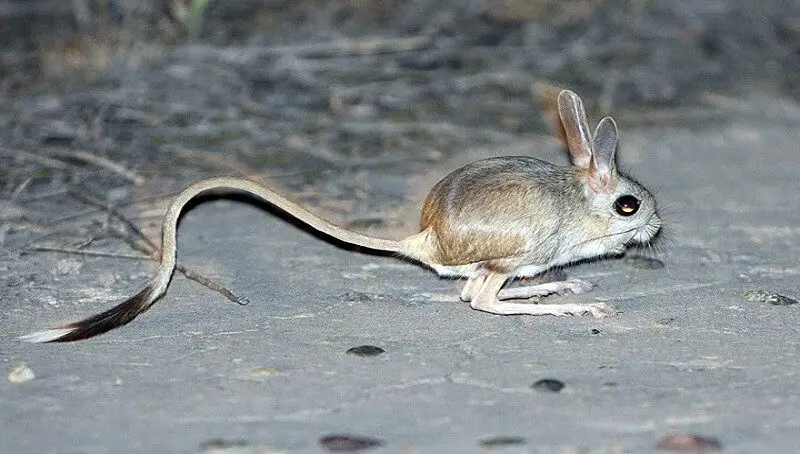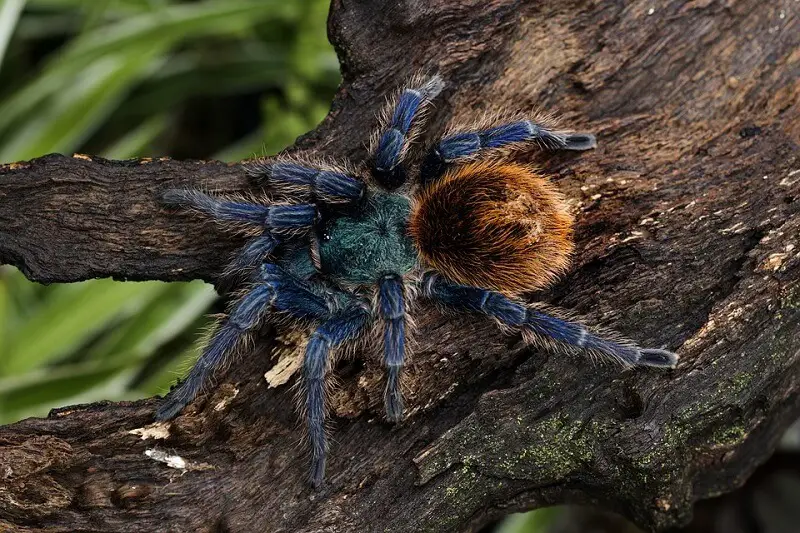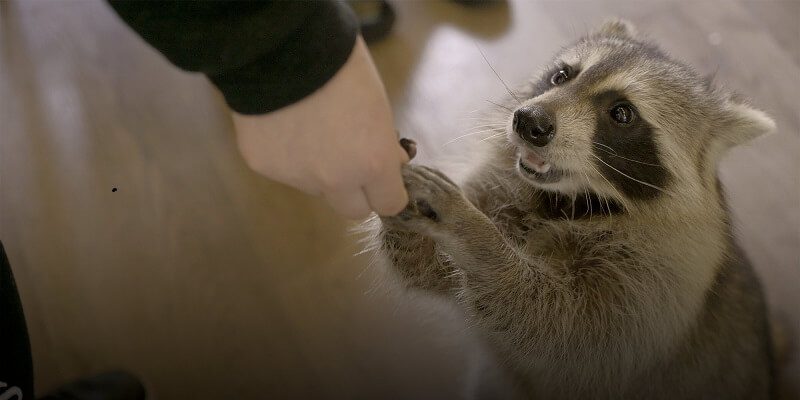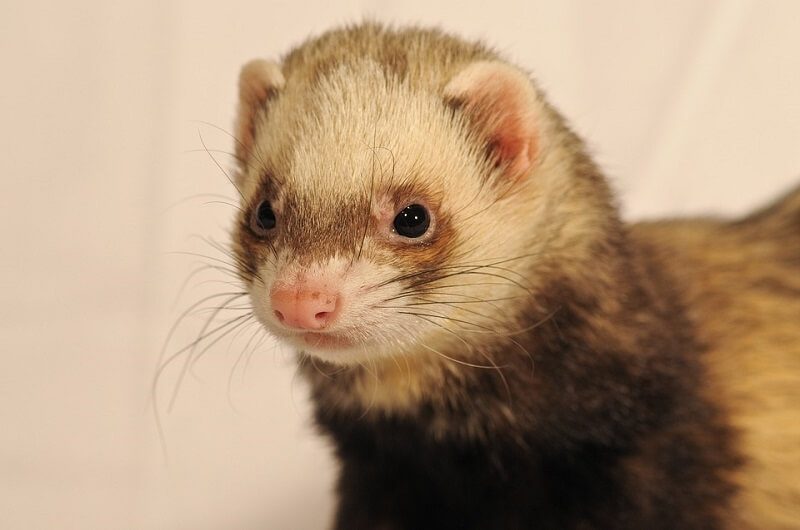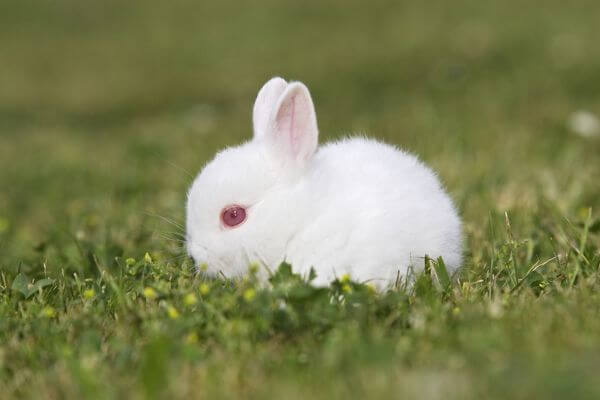Jerboa is part of the Dipodoidea family. It is a jumping rodent animal that can be found in North Africa, Asia, China, and Manchuria. It lives in desert areas with a warm and very warm climate.
The jerboa is a miniature animal that has a completely bizarre appearance. From the outside, it seems that his body is made up of parts of various animals, but despite this, it has perfectly adapted to the harsh environmental conditions, and can easily live even in places where it is difficult for other creatures to survive, for example, in arid deserts.
Jerboa description
Jerboa has a head and a torso in the form of a mouse or a rat, has a sensitive mustache like a cat, the eyes are large, similar to the eye of an owl, the ears are like those of a squirrel, and the hind legs are like the ones you would find on a kangaroo. The forelimbs make them similar to dogs and they have long tails, sometimes covered with fur.
The length of the animal is between 5 and 15 cm, depending on the species. The average weight of a jerboa is between 50 and 140 grams.
Head: The skull is very similar to that of a mouse. The nose of this small animal is strong and adapted for holes. The eyes are usually large enough, adapted for night activity. The ears are also large and protected by short and coarse hair. If we talk about teeth, then I can tell you it has curved incisors shaped like a chisel, as well as strong molars, which are necessary for the jerboa to eat hard plants on arid earth. It is also worth noting the rather long and sensual mustache, which is necessary to control the underground environment or on the surface of the earth at night.
Body: It has a mouse-like body shape, covered with soft fur. The color of the fur is dark sand under the limbs and belly, and the coat has a lighter shade.
Extremities: The hind legs are 4 times longer than the front legs, designed for a rather strong force. With the help of the hind limbs, the jerboa can jump up to one and a half meters in height and up to 3 meters in length. Four fingers, in Asian jerboa, or three, in African species, are stretched on the paws. The front legs of the animal are quite small in size. They act as hands because they are designed for digging holes, and can also transport food.
Tail: As a rule, the tail is longer than the head and body, and it is used to maintain balance in the feet.
Jerboa has a well-developed sense of smell and hearing, but their vision is pretty weak.
Habitat and diet of jerboa
The jerboa is found in desert and steppe habitats where there is vegetation. These are nocturnal rodents that live alone and spend most of their day in relatively small burrows, about 40 cm deep. These holes are clearly visible in the light sand and contain well-defined nesting rooms.
The main component of the nutrition of a jerboa is based on plants. They can also eat seeds if they are not very strong. Some smaller species also feed on bugs and other insects they encounter. Unlike gerbils, jerboas do not store their food.
Most species of jerboa have very well-developed hearing. They use it to avoid nocturnal predators.
Jerboa behavior
If you see a running jerboa, you can take it for a mini-kangaroo. These animals are able to jump a distance of 10-13 cm at each step. However, if the jerboa feels danger, then it can become more energetic, and its jumping can reach up to one and a half meters in height and up to 3 meters in length. This means that the jerboas can reach speeds of up to 25 km/h when predators chase them away. They can move from side to side in a zig-zag motion to confuse enemies. Almost every predator is a danger to these rodents, especially foxes, owls, and snakes.
The jerboas survive in the desert, hiding in the tombs. Living under the ground, they manage to hide from the heat and cold of the deserts. Their burrows are usually found near vegetation, but during the rainy season, tunnels are dug near hills or earthworks, where they can escape the flooding waters. During hot summers in the African deserts, animals seal the hole entrance with earth blocks to prevent heat from entering. Asian herbs in winter also seal the entrances to their burrows to prevent the cold from entering. Such holes are usually quite deep. They can reach 3-4 meters deep.
You might also like my articles with interesting facts about the wallaby, the aye aye, or the aardvark.
These small animals have the ability to quickly dig the soil. They use their short front legs to dig holes. Also, during this process, their large legs work. Strong limbs are necessary for the animal to push the dug soil. Many rodent species are very well adapted to live in sandy deserts. Jerboas have special folds of skin, which are used to prevent sand from entering the nose. They also have special hair in their ears, which also prevents sand from entering.
Jerboa’s life cycle
They belong to polygon species. Mating usually occurs shortly after waking up from hibernation. Females can bring offspring twice a year, usually in summer. Between 2 to 6 offspring are usually born in a litter. The gestation period lasts from 25 to 35 days. In fact, little is known about the parental relationships of these small animals. Like most mammals, females care for their young, at least until they stop feeding on milk.
The jerboa babies are developing quite slowly. They are usually born without hair. The posterior legs do not grow until the age of 2 months. They can also not jump until 3 months of age. The jerboa matures after 3.5 months. The average lifespan of these animals in the wild is up to 6 years.
Dangers and predators of jerboas
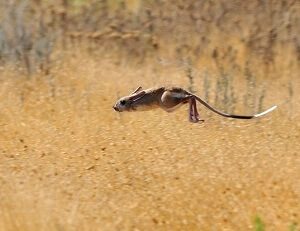 In general, the jerboa has a very uncertain future. This small animal constantly encounters fairly dangerous predators, especially those who go hunting at night. These include owls, snakes, foxes, jackals, and even domestic cats. However, the biggest threat to them is the possible loss of habitat, and this can happen by human fault.
In general, the jerboa has a very uncertain future. This small animal constantly encounters fairly dangerous predators, especially those who go hunting at night. These include owls, snakes, foxes, jackals, and even domestic cats. However, the biggest threat to them is the possible loss of habitat, and this can happen by human fault.
Some of the species of jerboa, for example, the five-finger dwarf, Cardiocranius paradoxus, and the thick-tailed dwarf, Salpingotus crassicauda, are now threatened with extinction. And species such as Egyptian jerboas, like the Euchoreutes naso and Jaculus jaculus, are already listed in the Red Book because they are in danger of extinction.
Jerboa as a pet
In recent years, jerboas have become very popular as pets, but they need care and attention. They are difficult to tame and are not very easy to care for because they are nocturnal. Therefore, these animals are by no means suitable as playmates for children. Depending on the type of jerboa, it must be determined whether it lives alone or in group housing. For family or group homes, it is important that animals have enough free space. Since the jerboas can jump long distances, they cannot be kept in tight cages. A cage of at least 3 meters must be available. A jerboa cannot be settled in the open air if the climate is cold.
Living conditions
In order for the animal to feel comfortable, underneath its cage you need to create a space with a size of at least 3×2 meters. There should be a place in the house where the jerboa could dig a hole for itself. In order for the animal not to be limited in movement, it is necessary to allocate him a large amount of free space in the apartment. It is necessary to make sure that the animal does not bite the furniture and cables. The jerboa will not stop in front of the wallpaper. Potted plants shouldn’t be kept within the reach of rodents, as they like to use potting soil for digging. If you plan to keep the jerboa in the terrarium, then you need to cover the glass walls with leaves and branches.
Feeding
Jerboas feed on roots and other parts of plants, as well as insects. In captivity, it should receive hay and cereals, as well as fresh vegetables. Fruits are recommended to be given in limited quantities due to the fructose content. Despite the fact that jerboas can live without water, it is still important for the animals to always have fresh water. In order for animals not to show a shortage of motor activity due to the fact that they do not need to obtain food, it is recommended to place food in the entire perimeter of the cage. This will help mimic the activity of the rodent in the wild.
Proper care
In the wild, the wild jerboa often becomes numb to save energy. Under critical conditions, this helps them maintain their body temperature at an optimal level. So, if the animal falls suddenly into a state of sleeping, do not worry. Since this animal is very sensitive to cold, its housing can be provided with additional heat, for example, by installing a special heater in the corner of the cage.
Interesting facts!
According to research, the proportion between the legs and the body of the jerboas exceeds the proportion of the legs and body of a kangaroo.
Although random jumps are good for avoiding predators and probably for finding hidden food resources randomly, they are not very energy efficient because to do them, jerboas need to consume a lot of energy.
The long-eared jerboa was first captured in the wild in 2007 during the London Zoological Society’s expedition to Gobi. Its ears make up two-thirds of the length of its body. This rodent has one of the highest ear-body ratios in the animal kingdom.
